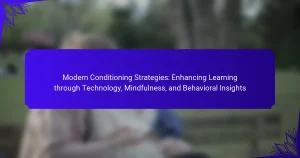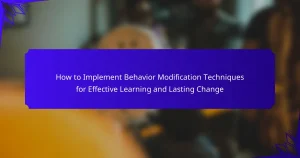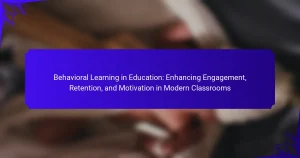Understanding learning theories in psychology is essential for enhancing educational practices and facilitating behavior change. This article explores behaviorism’s focus on observable actions, cognitivism’s emphasis on mental processes, and constructivism’s advocacy for experiential learning. It examines how these theories contribute to effective teaching methods and the impact of individual differences and environmental factors on learning outcomes. Finally, it addresses common challenges in applying these theories and best practices for optimizing educational strategies.
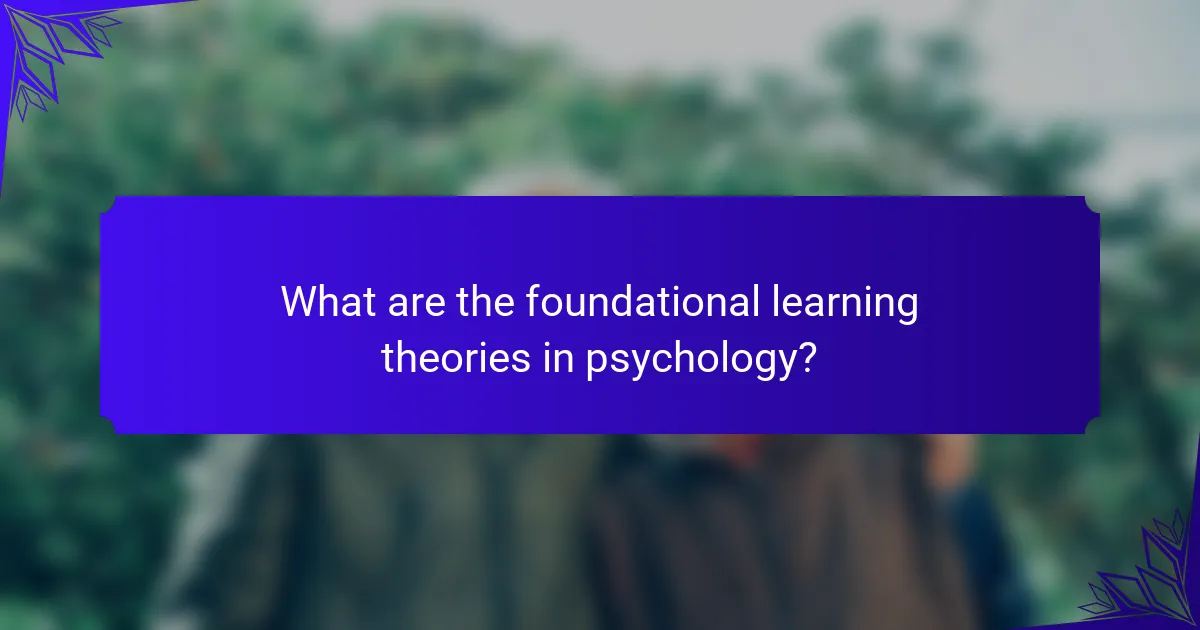
What are the foundational learning theories in psychology?
Learning theories in psychology include behaviorism, cognitivism, and constructivism. These foundational theories influence educational practices and behavior change strategies.
Behaviorism focuses on observable behaviors and the effects of external stimuli, emphasizing reinforcement and punishment. Cognitivism addresses internal mental processes, highlighting the role of memory and problem-solving. Constructivism posits that learners construct knowledge through experiences, promoting active engagement.
Each theory offers unique insights into how individuals learn, shaping modern educational frameworks. Understanding these theories enhances the effectiveness of teaching methods and learning environments.
How do classical and operant conditioning differ?
Classical conditioning involves learning through association, while operant conditioning focuses on learning through consequences. Classical conditioning pairs stimuli to elicit responses, whereas operant conditioning uses rewards or punishments to shape behavior. Both theories significantly impact behavior change and educational strategies.
What role does social learning play in behavior change?
Social learning significantly influences behavior change by facilitating the acquisition of new behaviors through observation and imitation. This theory emphasizes the role of social context and interactions in shaping individual actions. Observational learning allows individuals to learn from the experiences of others, leading to behavior modification without direct experience. Key aspects include modeling, reinforcement, and the social environment’s impact on motivation. As a result, social learning can effectively promote positive behavior changes in various settings, such as education and therapy.
How does constructivist theory influence modern education?
Constructivist theory significantly shapes modern education by promoting active learning and critical thinking. It encourages students to construct knowledge through experiences rather than passively receiving information. This approach fosters deeper understanding and retention.
Constructivism emphasizes collaboration, allowing students to engage in discussions and group work. This interaction enhances problem-solving skills and prepares students for real-world challenges. Moreover, technology integration in constructivist classrooms supports personalized learning, accommodating diverse learning styles.
Assessment methods in constructivist education focus on formative evaluations. These assessments guide students’ learning processes and provide feedback for improvement. As a result, learners become more self-directed and motivated.
Overall, constructivist theory transforms educational practices by prioritizing student agency and fostering a dynamic learning environment.

What are the universal attributes of learning theories?
Learning theories share universal attributes that enhance understanding of behavior and education. These attributes include the focus on cognitive processes, the role of environmental factors, and the significance of reinforcement. Additionally, theories emphasize the importance of motivation and the impact of social interactions on learning outcomes. Each theory contributes uniquely to educational practices and behavior change strategies.
What are the core principles of behaviorism?
The core principles of behaviorism focus on observable behaviors, emphasizing that all behaviors are learned through interaction with the environment. Key aspects include reinforcement, punishment, and conditioning, which shape behavior through consequences. Behaviorism dismisses internal thoughts or feelings as primary influences, concentrating instead on external stimuli and responses. This approach is foundational in educational settings, guiding techniques for behavior modification and learning strategies.
How do cognitive theories shape understanding of learning processes?
Cognitive theories significantly enhance the understanding of learning processes by emphasizing mental processes. They focus on how information is processed, stored, and retrieved, shaping educational strategies. For example, theories like Piaget’s cognitive development highlight stages of learning, while Vygotsky’s social development theory underscores the role of social interaction. These theories advocate for active learning environments, where learners engage in problem-solving and critical thinking. As a result, educational practices are increasingly designed to foster these cognitive processes, tailoring instruction to individual learning needs.
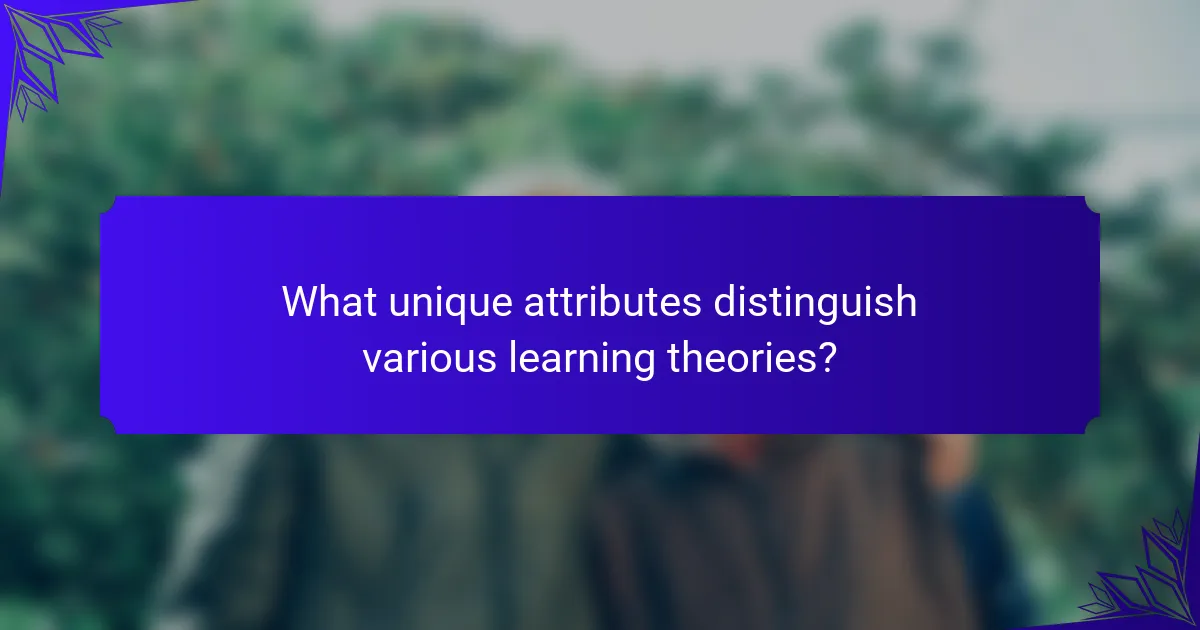
What unique attributes distinguish various learning theories?
Learning theories are distinguished by unique attributes that impact educational practices. Key theories include behaviorism, cognitivism, and constructivism, each with distinct approaches to learning.
Behaviorism emphasizes observable behaviors and external stimuli, focusing on reinforcement as a unique attribute. Cognitivism centers on mental processes, highlighting information processing and memory as critical attributes. Constructivism, on the other hand, promotes active learning and personal experience, showcasing collaboration and context as rare attributes.
These unique attributes shape how educators design learning environments, influencing strategies for behavior change and educational impact.
How does the application of learning theories vary in different educational settings?
The application of learning theories varies significantly across educational settings. In traditional classrooms, behaviorist principles dominate, emphasizing reinforcement and structured learning. In contrast, progressive environments often adopt constructivist approaches, promoting exploration and critical thinking. Online learning platforms leverage cognitive theories, focusing on self-paced learning and personalized feedback. Each setting tailors the application of these theories to meet diverse learner needs and contexts.
What innovative methods are emerging in the field of behavior change?
Innovative methods in behavior change include digital interventions, gamification, and personalized feedback. These approaches leverage technology to enhance engagement and effectiveness in learning and behavior modification. Digital platforms facilitate real-time tracking of progress, while gamification introduces rewards and challenges to motivate individuals. Personalized feedback tailors strategies to individual needs, increasing relevance and impact. These methods reflect a shift towards more interactive and user-centered approaches in psychology.

What are the rare attributes that impact learning and conditioning?
Rare attributes that impact learning and conditioning include individual differences, emotional context, and environmental factors. Individual differences, such as cognitive styles and prior knowledge, influence how learners process information. Emotional context, including motivation and anxiety levels, can significantly affect engagement and retention. Environmental factors, like classroom settings and social interactions, also play a crucial role in shaping learning experiences. Understanding these rare attributes enhances the effectiveness of educational strategies and behavior change initiatives.
How do cultural contexts influence learning theories?
Cultural contexts significantly shape learning theories by influencing how individuals perceive and engage with educational content. These contexts affect motivation, communication styles, and the interpretation of information. For instance, collectivist cultures may prioritize group learning, emphasizing collaboration, while individualistic cultures often focus on personal achievement. Additionally, cultural values dictate the relevance of certain knowledge and skills, impacting curriculum design and teaching methods. Understanding these influences is crucial for educators to create effective learning environments that resonate with diverse student backgrounds.
What are the implications of neuroplasticity on learning?
Neuroplasticity significantly enhances learning by enabling the brain to reorganize itself through new experiences. This adaptability allows for improved retention and application of knowledge, fostering behavior change and educational advancement. Research indicates that engaging in novel tasks stimulates synaptic connections, which can lead to better learning outcomes. For instance, studies show that regular practice in a skill can strengthen neural pathways, making learning more efficient. By leveraging neuroplasticity, educators can develop strategies that optimize learning environments and promote lifelong education.
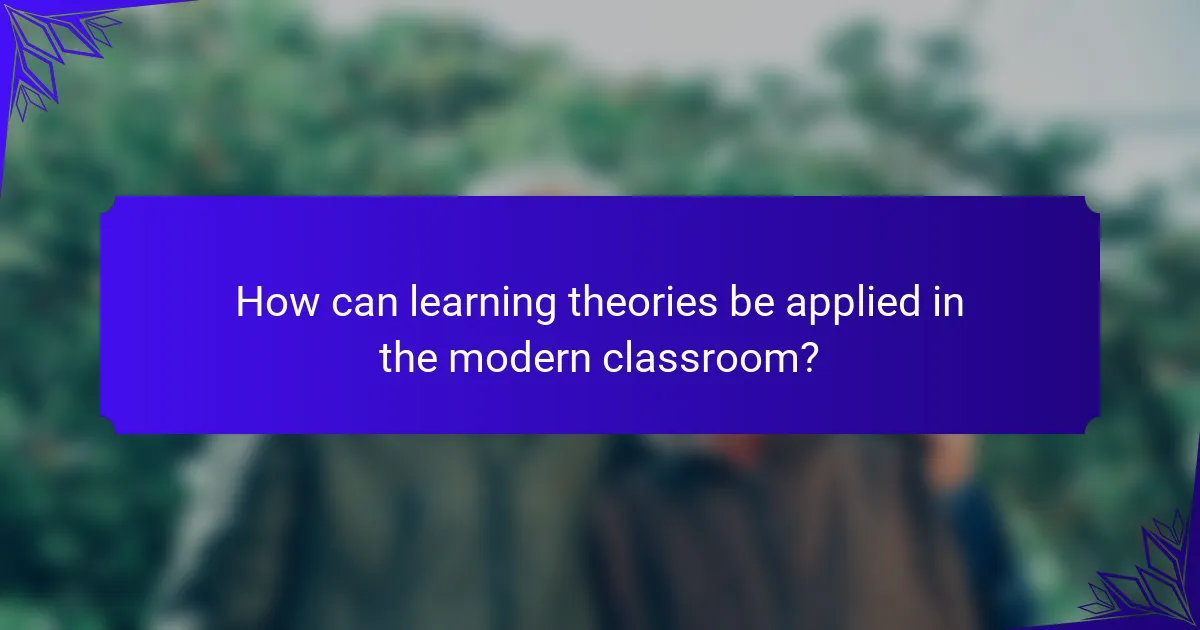
How can learning theories be applied in the modern classroom?
Learning theories can enhance modern classrooms by fostering engagement and adapting teaching methods to diverse learning styles. Constructivist approaches, such as collaborative learning, encourage students to build knowledge through interaction. Behaviorist techniques, like reinforcement, motivate students to achieve desired outcomes. Cognitive strategies, including metacognition, help learners develop self-awareness about their learning processes. These applications lead to improved educational outcomes and a more dynamic learning environment.
What strategies can educators use to implement conditioning techniques?
Educators can implement conditioning techniques through reinforcement, modeling, and feedback. Reinforcement encourages desired behavior by providing rewards or positive outcomes. Modeling involves demonstrating behaviors for students to emulate, fostering observational learning. Feedback offers guidance on performance, helping students adjust their actions effectively.
How can technology enhance behavior change in educational settings?
Technology can significantly enhance behavior change in educational settings by providing personalized learning experiences. Digital tools enable real-time feedback, which fosters motivation and accountability among students. For instance, learning management systems can track progress and adapt content to individual needs, promoting engagement. Additionally, gamification techniques leverage rewards and challenges to encourage positive behaviors, creating a dynamic learning environment. Overall, integrating technology facilitates a more interactive and responsive educational experience, leading to sustained behavior change.
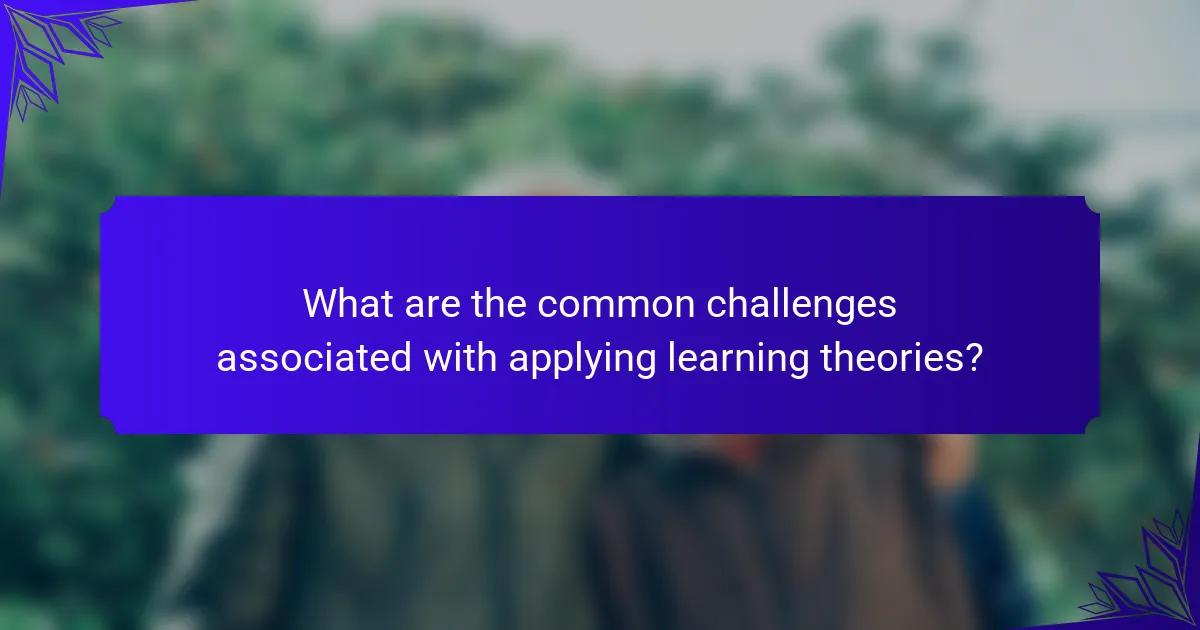
What are the common challenges associated with applying learning theories?
Common challenges with applying learning theories include resistance to change, contextual variability, and misalignment with educational practices. Educators may struggle to implement theories effectively due to entrenched habits and beliefs. Additionally, learning theories often do not account for diverse learning environments, leading to inconsistent application. Misunderstanding core principles can also result in ineffective strategies, diminishing their educational impact.
What misconceptions exist about behaviorism in education?
Misconceptions about behaviorism in education include the belief that it neglects cognitive processes, promotes rote learning, and lacks emotional consideration. Critics argue that behaviorism reduces learning to mere stimulus-response patterns, overlooking the importance of understanding and internalizing knowledge. Additionally, some educators fear that a strict behaviorist approach stifles creativity and critical thinking. However, behaviorism can effectively shape positive behaviors and reinforce learning when integrated with other theories. Understanding these misconceptions is essential for applying behaviorist principles effectively in educational contexts.
How can educators overcome resistance to behavior change?
Educators can overcome resistance to behavior change by employing strategies that foster engagement and understanding. Building strong relationships with students enhances trust, making them more open to change. Additionally, incorporating practical examples of behavior change benefits can motivate students. Utilizing reinforcement techniques, such as positive feedback, can also encourage desired behaviors. Lastly, creating a supportive learning environment helps reduce anxiety associated with change, promoting a smoother transition.
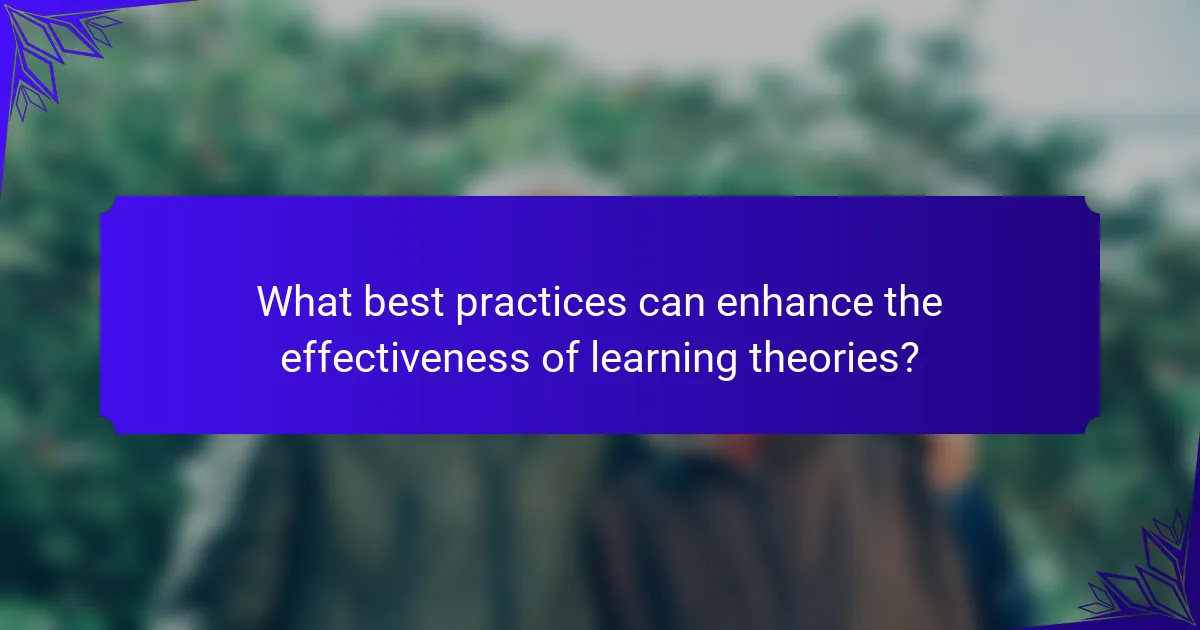
What best practices can enhance the effectiveness of learning theories?
Utilizing best practices enhances the effectiveness of learning theories by fostering deeper understanding and application. Key strategies include integrating active learning techniques, promoting collaborative environments, and applying real-world scenarios. Active learning engages learners directly, improving retention and comprehension. Collaborative environments encourage peer interaction, enhancing critical thinking and problem-solving skills. Real-world scenarios bridge theory and practice, making learning relevant and impactful. Additionally, ongoing assessment and feedback mechanisms support continuous improvement and adaptation of learning strategies.
What are the key takeaways for educators implementing these theories?
Educators implementing learning theories should focus on practical applications to enhance student engagement and behavior change. Understanding modern conditioning can help shape effective teaching strategies. Emphasizing positive reinforcement is crucial for fostering a supportive learning environment. Incorporating diverse instructional methods can address various learning styles and needs, promoting inclusivity. Continuous assessment of student progress allows for adjustments in teaching approaches, ensuring that educational impact is maximized.
How can continuous assessment improve learning outcomes?
Continuous assessment enhances learning outcomes by providing ongoing feedback, which helps identify student strengths and weaknesses. This approach encourages adaptive learning strategies, fostering deeper understanding and retention of knowledge. Research shows that students engaged in continuous assessment demonstrate improved performance and motivation. By integrating formative assessments, educators can tailor instruction to meet diverse learning needs, thus maximizing educational impact.
What expert insights can guide effective behavior change strategies?
Expert insights for effective behavior change strategies include leveraging reinforcement principles, understanding individual motivations, and applying social learning techniques. Reinforcement can enhance desired behaviors through positive feedback and rewards. Recognizing intrinsic and extrinsic motivators helps tailor strategies to individual needs. Additionally, modeling behaviors through observational learning fosters skill acquisition and adaptation.
